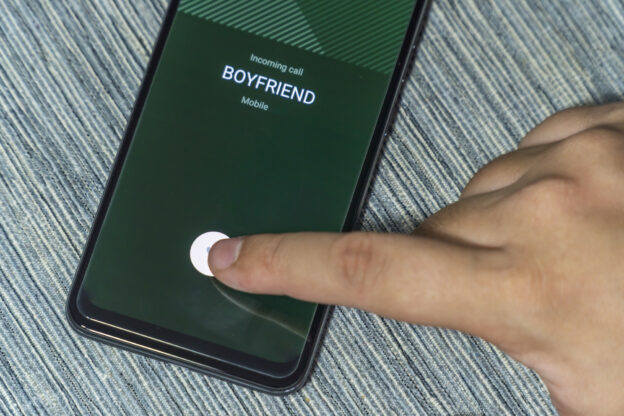You’re bored at home and ready to ditch the standard phone dating apps for the time being. How else can you find people for a good time without having to leave your couch?
Have you considered chat lines for sex and love?
Many people worry about whether or not phone sex is “cool.” Cool or not, it’s a great way to have fun from the comfort of your own bedroom. Do you know how to have phone sex?
We’re here to offer some advice to newbies. Keep reading to learn all about getting steamy over the phone for the first time.
How Do You Initiate Phone Sex for The First Time?
Initiating phone sex for the first time is going to be awkward no matter what type of person that you are. After all, this is an unusual situation and you don’t have a person in front of you to talk to. You can’t gauge their reactions with anything aside from their words.
If you’re trying to initiate phone sex with a partner (even a long-distance chat line partner) instead of phone sex chat lines, it’s even more awkward. But does it have to be?
Don’t be afraid to mention that you’ve never done this before. There’s nothing shameful about being a newbie, and it will help the other person understand your quirks and what they should be doing.
Let them know your intentions. It’s helpful to do this via text chat if you’re able so you can hit the ground running.
When in doubt, let the other person take the lead. It’s fine to play along and let them guide you!
Don’t Overdo It
To be clear, “overdoing it” is subjective. For some people, going overboard is the name of the game. For others, it comes off as “cringy.”
It’s helpful to look at media representations of phone sex, but try not to take them as gospel. Like everything else on television and in movies, phone sex is exaggerated by actors for dramatic or comedic effect.
Especially at first, it’s helpful to stay low-key and even fairly vanilla until you find your footing. Try to pretend that you’re with that person in real life. What would you say to them?
Once you get comfortable and you understand what the other party likes and dislikes, you can start getting more into it.
If you realize that you’re saying things that feel overdone, it’s okay to laugh it off and try again. Sometimes phone sex is silly!
Communication Is Key
Remember that there’s someone on the other side of that phone line. Just like with normal sex, you need to make sure that you’re communicating with them. Their comfort is as important as yours is!
If both of you are inexperienced with phone sex, it’s helpful to check in from time to time so you can make sure that you’re both enjoying yourselves. If something is amiss, change routes!
Even if your partner has experience with phone sex, communication will help you ensure that you’re both getting what you want. You can talk about your various kinks (if any), what you want to “discuss” during this session, how you like your partner to talk to you, and more.
You don’t want to end up saying something that offends the other party. Discussing it beforehand keeps everything running smoothly. On the same note, don’t be afraid to mention when you feel uncomfortable, even if it means that you have to stop the session.
Speak With Confidence
As we mentioned before, it’s likely that you’re going to feel awkward at first. One of our top first-time phone sex tips is to speak with confidence, no matter what you’re saying.
This is going to be tough and it might take some practice. Don’t be afraid to practice on your own before your phone sex session. This will also feel awkward, but it will give you a good idea of how you sound saying various “sexy” things so you can say them with more confidence later on.
Even if the things that you’re saying aren’t quite “right,” they’ll sound better if you’re speaking with a confident tone. As you get more comfortable, confidence will come naturally.
At-Home Preparation
Just like “real” sex, phone sex requires some prep work. Sure, you don’t have to trim everything and gussy yourself up for your hot and steamy session, but you should prepare yourself in some way.
Start by dressing the part. No one is going to see you (unless you send some saucy photos), but you’re going to see you. Clothes impact the way that you feel, so why not make yourself feel sexy with some cute lingerie or your favorite outfit? You could even get naked if that suits you.
If you’re someone that wears makeup or perfume, try it out. It will feel silly, but it makes a huge difference.
Make sure that you have plenty of alone time in a quiet space for your phone sex session. There’s nothing more awkward than having someone walk in on you. Consider playing some music and lighting some candles to set the mood for yourself.
Finally: toys. Do you use them? If so, prepare them ahead of time so you don’t have to go digging for them later.
Try to Relax
The most important tip we can give you, as far as phone sex for beginners goes, is that you need to relax.
Yes, you’re going to feel awkward. Things won’t go the way that they went in your head and you might stumble over your words. That’s okay!
Remember that this is supposed to be fun. It’s only the first time, so you can keep on trying and having fun while you do it.
That’s How to Have Phone Sex as a Beginner
Figuring out how to have phone sex can be somewhat of a trial and error process. You’re going to be surprised and confused sometimes, and that’s okay.
Remember to sit back and relax, check in with the other party, and try to have fun! This is a no-stress session.
Are you a single who is ready to mingle and start a saucy phone sex call? Are you looking for love on the phone? Check out our directory and find your new favorite phone partner today.


